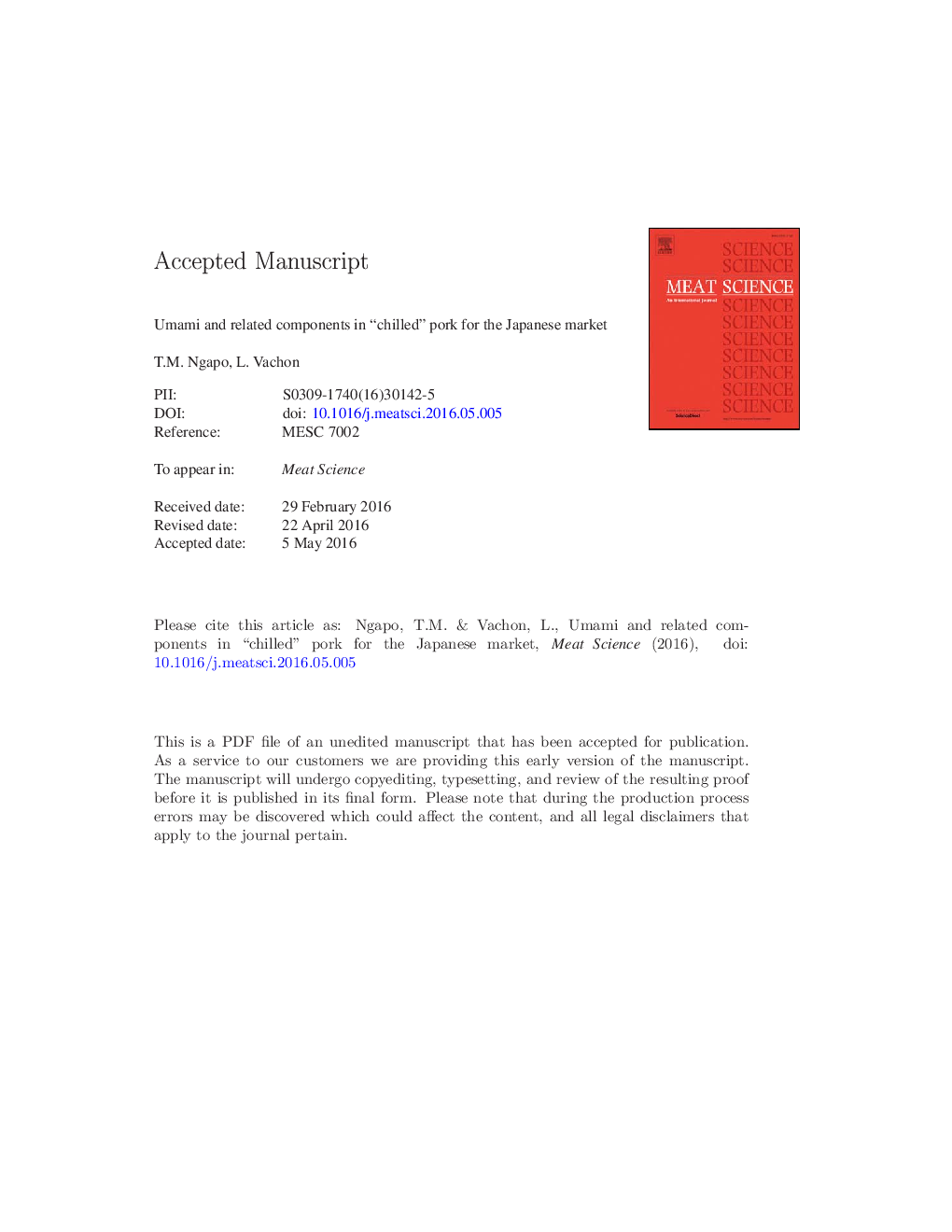| Article ID | Journal | Published Year | Pages | File Type |
|---|---|---|---|---|
| 5791106 | Meat Science | 2016 | 34 Pages |
Abstract
The aim of this study was to evaluate umami-related components and their evolution in Canadian pork destined for the Japanese market. Export quality pork loins for Japan were subjectively selected on-line for marbling, colour and firmness; remaining loins were retained for the domestic market. At 48 h post-mortem, samples were aged 5 d at 4.0 °C (fresh) or 13, 28, 43 or 58 d at â 1.7 °C (chilled). Meat qualities differed only in pH (< 0.1 pH unit; P < 0.05). Generally, free amino acid concentrations increased and nucleotide concentrations decreased with longer ageing periods. The equivalent umami concentration (EUC) was highest in the pork aged 5 d at 4.0 °C and at 43 d â 1.7 °C (P < 0.05) which is estimated as the transportation time for Canadian chilled exports to Japan. A lack of differences in EUC between domestic and export pork and between fresh and 43 d chilled ageing demonstrates that Canadian chilled pork in Japan has the EUC of its fresh 5 d counterpart.
Related Topics
Life Sciences
Agricultural and Biological Sciences
Food Science
Authors
T.M. Ngapo, L. Vachon,
